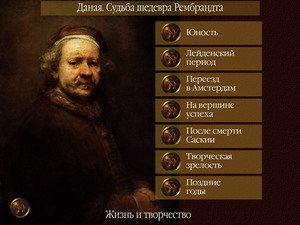Rembrandt’s 'Danae': the return of a masterpiece

On 15 June 1985, one of the most significant masterpieces in the Hermitage’s collection – the Danae by Rembrandt – suffered an attack right there in the room where it was on show: the canvas was cut several times with a knife and its surface was splashed with hydrochloric acid. When the painting was washed with clean water in order to minimize the effect of the acid, the terrible consequences of the attack became apparent: in several places the canvas was ripped right through and a part of the painting had been destroyed by the acid.
From that moment began the daily struggle, lasting for years, to restore this masterpiece. Day by day the specialists of the Hermitage’s restoration workshops toiled to restore the lost portions of the painting; at times a single square centimetre of canvas would require a whole day’s labour. But finally, following prolonged work, Rembrandt’s Danae was finally returned to the Hermitage’s exhibition rooms in 1997.
This was a red-letter day not only for the museum but for all lovers of art. So before taking its accustomed place in the exhibition, Danae spent a whole year in “separate accommodation”. It was accompanied by a multi-media programme specially created to mark the picture’s return.
The programme’s particular task was to relate the stages in the restoration of the painting. With the help of computer animation the whole process of restoration was reconstructed. Step by step, the programme showed the journey from the painting’s conservation to the restoration of all the layers of the canvas (in accordance with its original structure) and the reconstruction of its lost portions.
One unexpected result of the restoration work was the insight gained into the working processes of the artist. With the help of special infra-red photography several features of the painting’s original version were established – features which the artist altered in his final version: for instance, the original position of Danae’s arm was different, as was the posture of her nurse.
All this material served as the basis for the information accompanying the showing of one picture. A multi-media film illuminated in detail the whole process of restoration, and also told of the picture’s subject and of Rembrandt’s working procedures during its creation. Unfortunately, after a year, when Danae was returned to its accustomed place in the Rembrandt room, the accompanying programme was removed and can probably now be seen only in the Hermitage’s archives.


